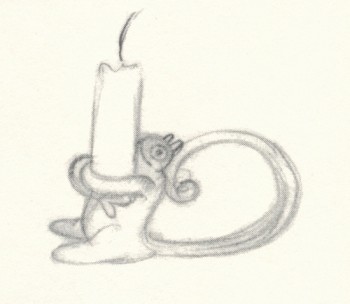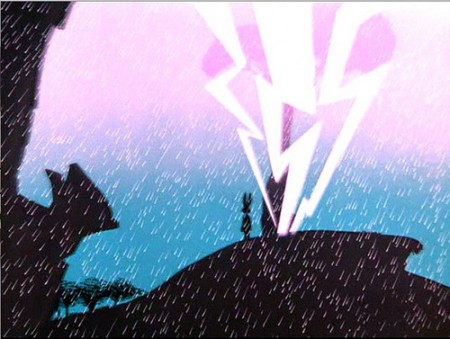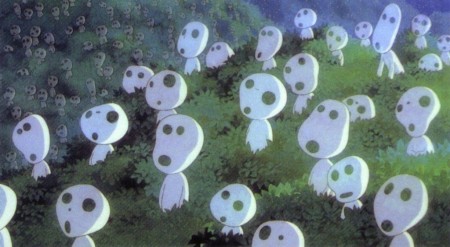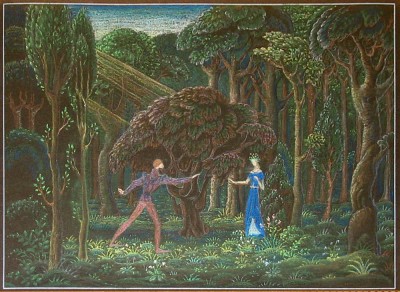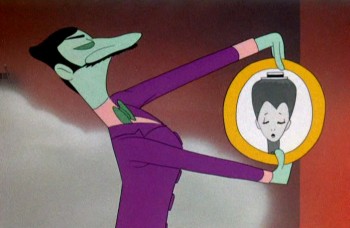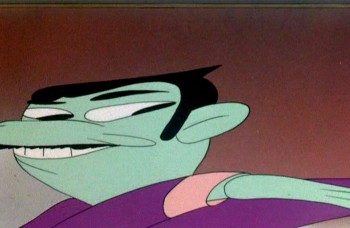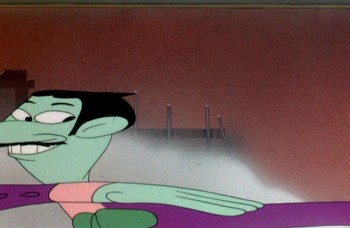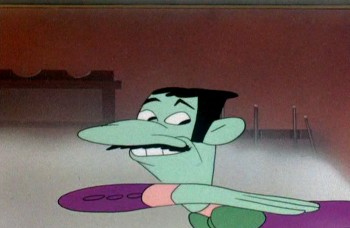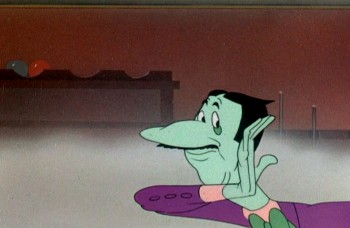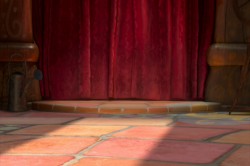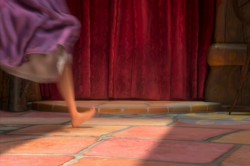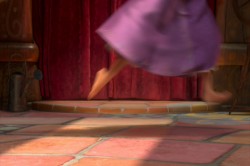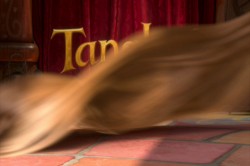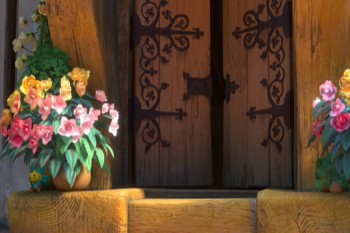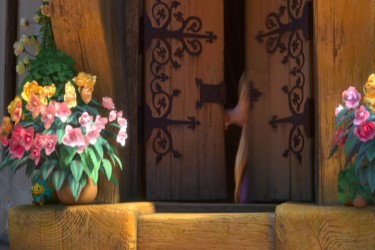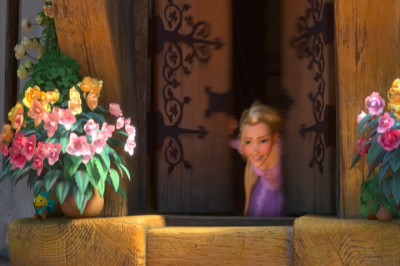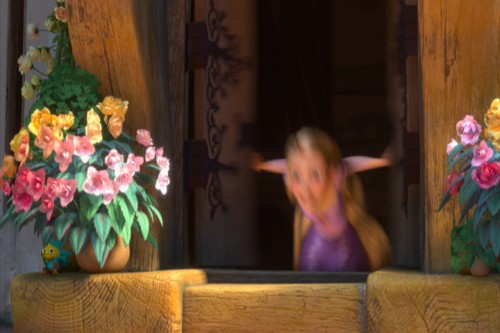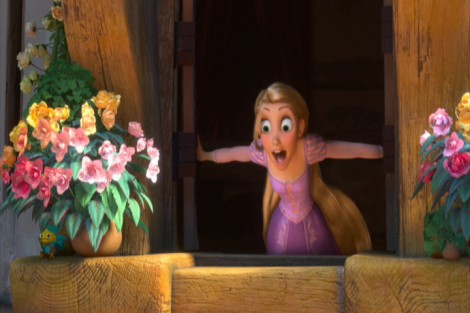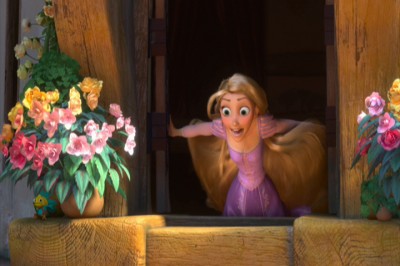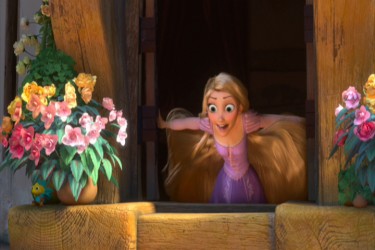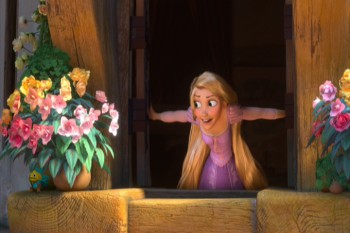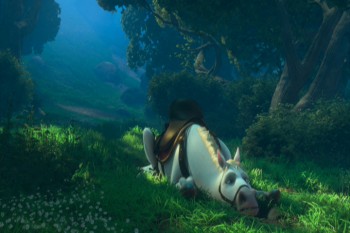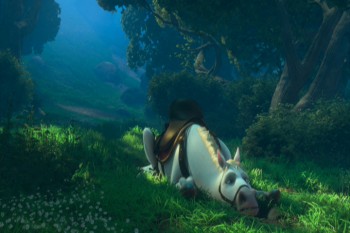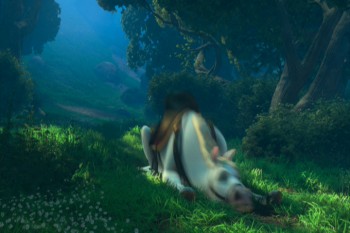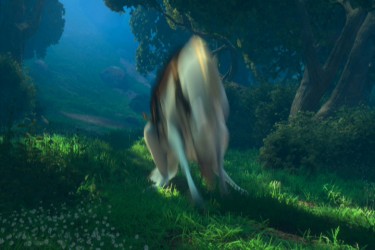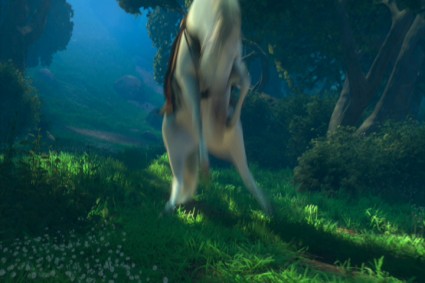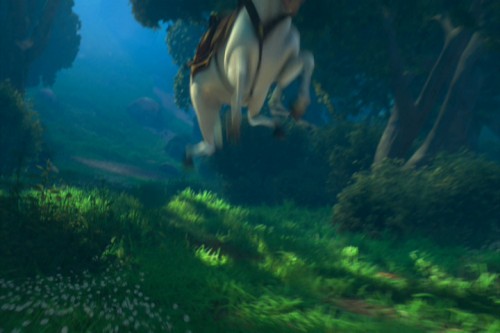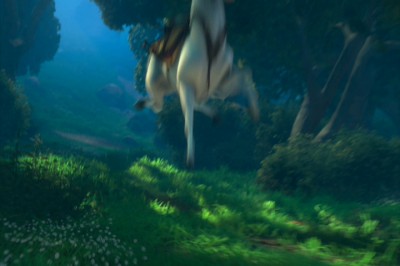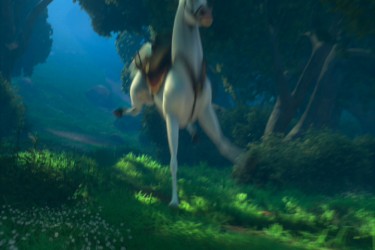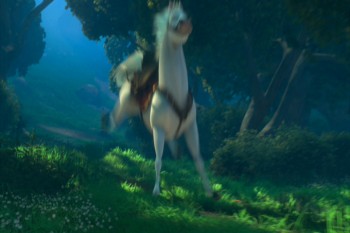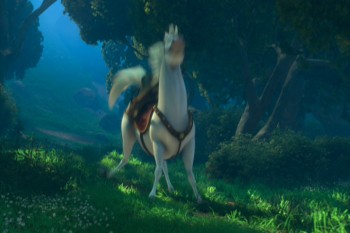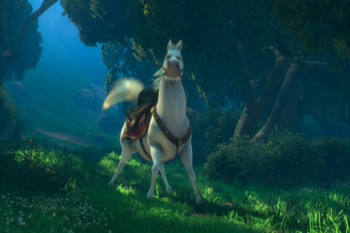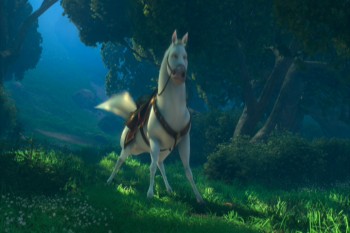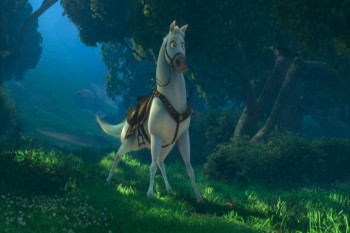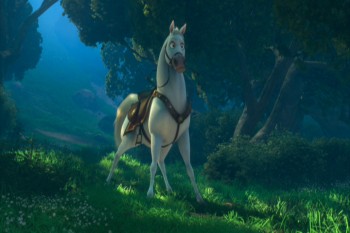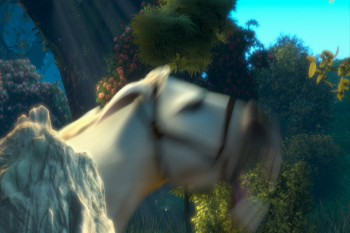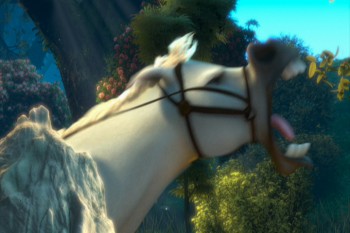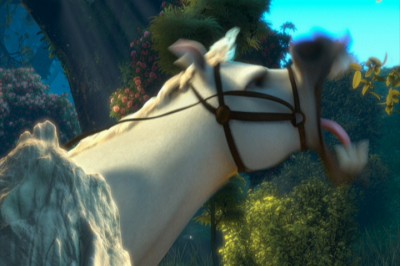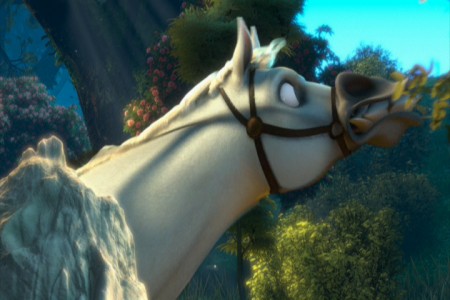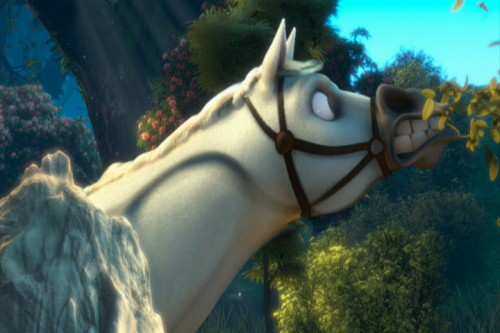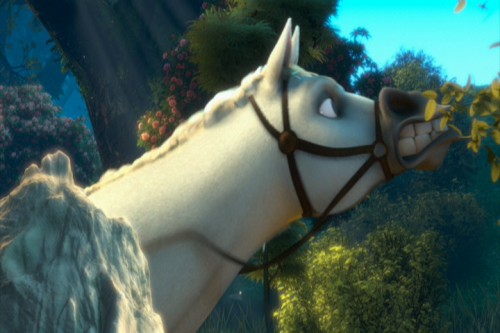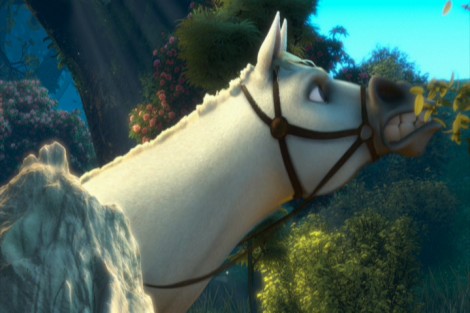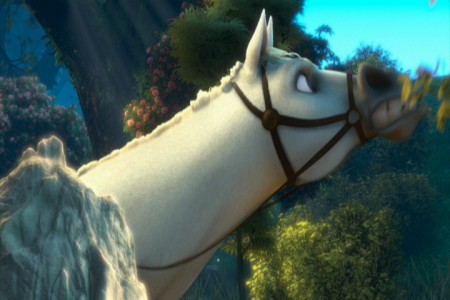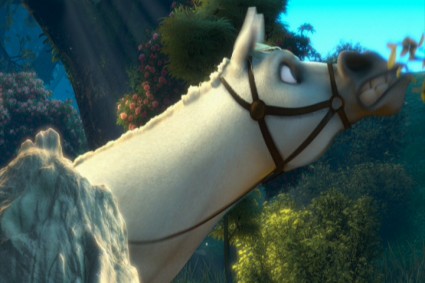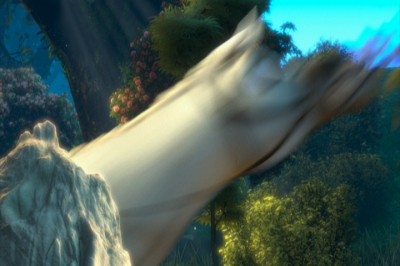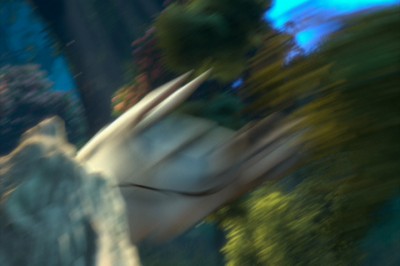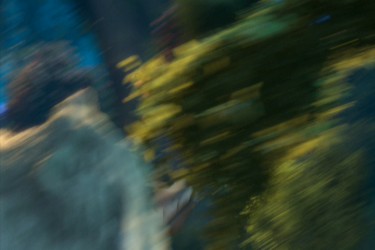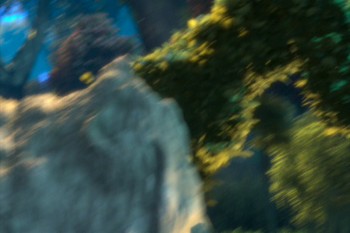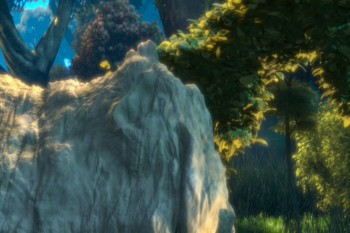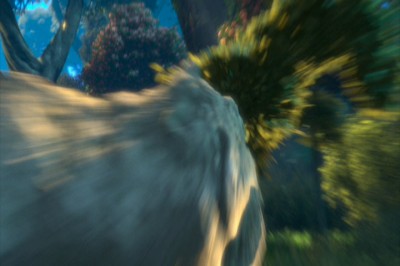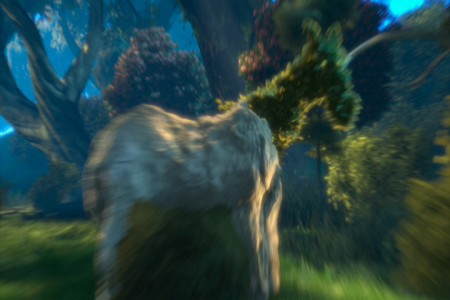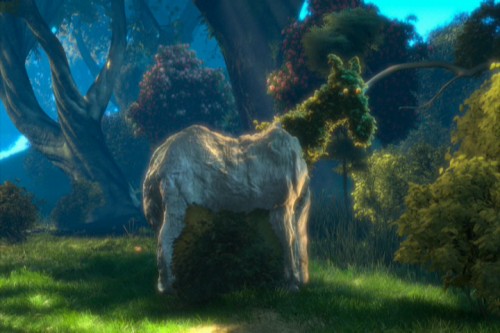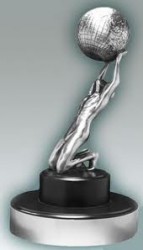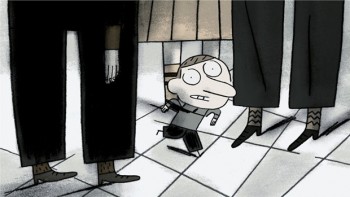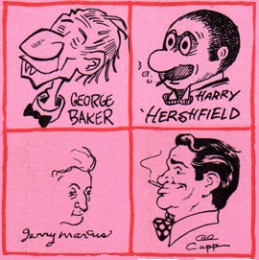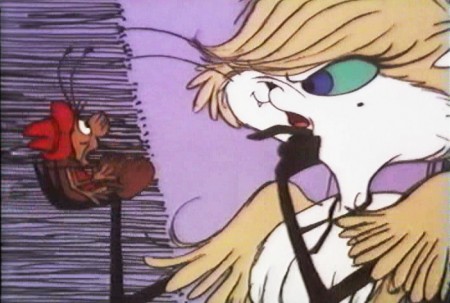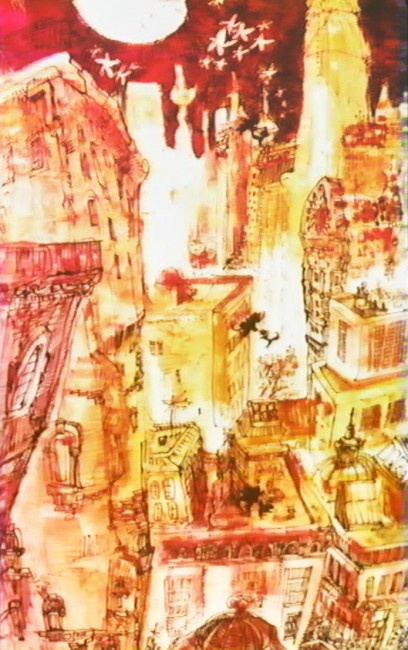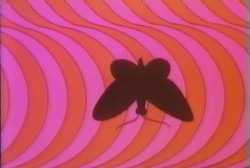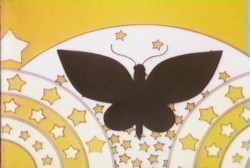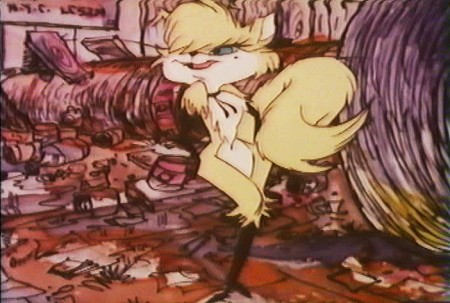Category ArchiveCommentary
Commentary 24 Mar 2012 06:31 am
Back to Kickstarting
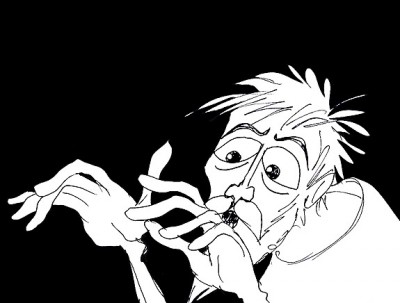
There’s been an enormous rush this past week to kick start my
Kickstarter Campaign into greater activity,
and there have been an enormously generous number of contributions
that I find both inspirational and wonderful.
It’s not quite what I expected from the experience
However, we’re still a mile away from the goal, and I’ve been
burning the midnight oil trying to come up with something to help
get me to the goal. It hasn’t happened yet, but I haven’t given up.
Meanwhile, I’d like to make sure you know that the official POE website is
poestory.net.
This poor blog make take some heat, so I apologize. Thanks.
____________________,
J.J.Sedelmaier, via Salon.com offers a beautifully scanned copy of Albert Hurter’s book, He Drew As He Pleased. I’d posted it in many parts, but it’s all together here in oneclean click..
Animation &Commentary 17 Mar 2012 05:52 am
Some thoughts, some opinions
- I saw Andrew Stanton‘s film John Carter this past Tuesday. Actually, I saw part of the film; I walked out after about 80 minutes. It was unwatchable in my book. Hundreds of computer created alien creatures with long necks and horns on their heads, and they all looked alike even though they were supposed to have personalities, I think.
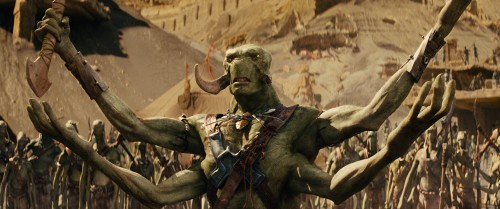
Meanwhile, John Carter is bounding miles around the Martian desert jumping all over the place for no particular reason. Creatures are shooting weapons at . . . oh who cares!
The film’s like a video game, completely without wit or any real intellect. It’s tedious beyond belief and a total waste of time. Go at your own risk. I don’t think it was worth the money it cost to make; Pixar could have made Finding Nemo 2 & 3 for the price. (By the way, Mars Needs Moms wasn’t good, but it was MUCH better than John Carter.) But I guess my opinion on this is really superfluous, and I’m not sure why I wrote anything about it.
What’s Opera Doc?
- Now onto a good film. William Benzon has an extraordinary article about
Chuck Jones‘ What’s Opera Doc? on his website,
The New Savannah. Plentifully illustrated he writes an
in depth article about the short, and it’s well worth the visit
for his commentary.
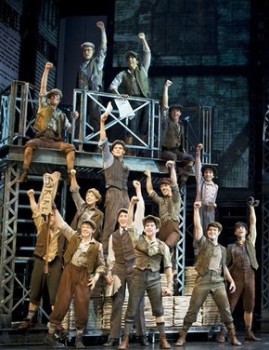 - On Wednesday I got to see a dress rehearsal of the new Disney theatrical Broadway presentation, Newsies. This is a brand new show adapted from the Disney movie of 1992 that starred Christian Bale and Robert Duvall. Alan Menken wrote songs for the film, and he’s rewritten songs for the show. Harvey Fierstein has written the book for the Broadway musical, and it’s set to open on March 29th.
- On Wednesday I got to see a dress rehearsal of the new Disney theatrical Broadway presentation, Newsies. This is a brand new show adapted from the Disney movie of 1992 that starred Christian Bale and Robert Duvall. Alan Menken wrote songs for the film, and he’s rewritten songs for the show. Harvey Fierstein has written the book for the Broadway musical, and it’s set to open on March 29th.
The show talks about the child labor laws in the early part of the 20th century and the organizing of a u-nion of the newspaper sales force to protect them from the likes of the major industries seeking to make bucks off their backs. (Needless to say, this is a show for our times, as the super conservatives try to destroy collective bargaining thus destroy labor laws and u-nion representation.)
The show is full of rousing musical numbers, intense power dancing choreographed by a brilliant Christopher Gatelli and superb direction by Jeff Calhoun. It’s amazing with such a large and constantly moving cast, that Mr. Calhoun is able to keep the sight lines so beautifully clear. Excellent work. The cast does not include major stars, and that’s wonderful – almost like something new on Broadway. Jeremy Jordan, who leads the pack of “Newsies,” is obviously going to be a star.
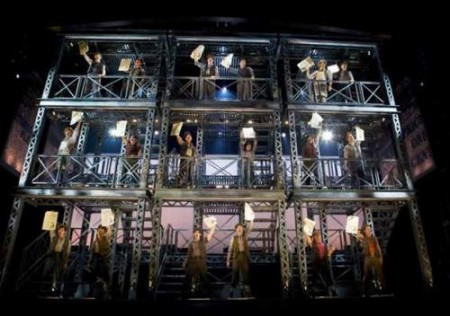
Great use of space for a large cast.
The set design was by Tobin Ost, and it’s basically steel girder like objects that move around the stage forming and reforming different constructs that serve many purposes. It reminded me (very marginally) of the brilliant set to Company by Boris Aronson back in 1970.
There seems to be a bit of work to go in finalizing the show (I would have liked to have seen more intimate moments – especially in the dance work), but it really is all there. A fierce piece from Disney, that I hope does well. It’s supposedly set for a limited run, but I think that’s questionable. It’ll run for a long time – a crowd pleaser.
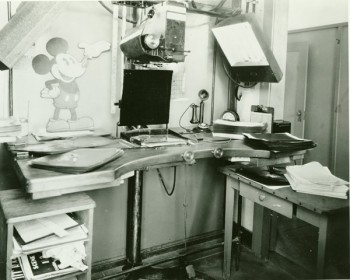 - I love a post that’s been placed by Hans Perk on his great site, A Film LA. It’s a real breakdown of the original Disney Hyperion Studio. Hans gives maps and directions to where this historic studio stood, and then proceeds to map out the entire studio giving us charts, photos and background information where everything stood.
- I love a post that’s been placed by Hans Perk on his great site, A Film LA. It’s a real breakdown of the original Disney Hyperion Studio. Hans gives maps and directions to where this historic studio stood, and then proceeds to map out the entire studio giving us charts, photos and background information where everything stood.
I’m not sure we even have this with the main studio lot anymore. It was the Hyperion studio where the Disney brothers grew and outgrew themselves, producing all those great Mickeys and Silly Symphonies and Snow White and a lot of the preliminary work on Bambi.
I’m always taken aback by the meticulous detail that Hans provides for us over and over in all these incredible posts on his site.
- In the recent days I’ve been just about all consumed with the Miyazaki canon of films. I spent an enormous amount of time reviewing, watching, scouring Spirited Away and have really been taken with the film, the animation, the direction, the story.
This led me to watch some of the earlier films to see where the film came from. Kiki’s Delivery Service wasn’t much help, though it was good to see where he came from. However, I have been a fan of Princess Mononoke and watching that again gives me a lot of ideas and thoughts. The animation for that film is somewhat limited, but the use of well drawn crowd scenes and maneuvers really is enlightening. Watching some of the natural woodland planning, backgrounds and direction is quite special, and I have to admit a certain awe with how he pulled it out of the film with such seeming effortlessnessand beauty.
I like to think that this is all going into my recent concentration of my POE film, and I’m sure it is. I have so many thoughts about that one. It’s a project that’s pushing me forward like I can’t tell you, and the only inspiration I seem to be getting is from these Miyazaki films. I know the financial direction the film’s going to have to take to get done (next to no money), but I’m determined, and I’m hoping some deal arrangement can be made very soon.
The Kickstarter campaign is the juice for the whole thing, and I can’t tell you how important that’s been for me. I’m trying desperately to get a couple of heavy hitters to get that money realized, but nothing yet. Your support has been enormous and enormously helpful.
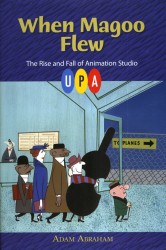 Anyway, back to Miyazaki. I have been watching the films of this master, but my tide is turning a bit. I received the new UPA book, When Magoo Flew by Adam Abraham, and have been reading that. Of course, it’ll lead to the shorts when that new DVD package reaches me – hopefully soon. The Jolly Frolics collection.
Anyway, back to Miyazaki. I have been watching the films of this master, but my tide is turning a bit. I received the new UPA book, When Magoo Flew by Adam Abraham, and have been reading that. Of course, it’ll lead to the shorts when that new DVD package reaches me – hopefully soon. The Jolly Frolics collection.
When I’ve finished reading it, I’ll write a review, and let me tell you it’s a fast read for me even though I’m trying to take my time. There’s a lot of solid research in there with a lot of strong details. It spends quite a bit of time talking about the politics of the time and studio.
However, once into it, I’m hoping for a bit more lyricism in the writing as a way of capturing the inspiration from the work they did on some of those gorgeous films. Perhaps I’ll only be able to get that from watching the films.
However, I still haven’t left the Miyazaki films, and I will write something probably too long when I get into it. The guy has my head twirling, I have to tell you, and it’s a bit hard for me to turn around and think about UPA with the material I’ve been getting from the Japanese contingent. I also want to watch 101 Dalmatians a little closer. I have seen the opening about half a dozen times in the last couple of weeks.
Commentary 10 Mar 2012 06:26 am
Hrrumph
And talking about Animated Features, did I mention our Kickstarter Campaign to get POE in motion? Well, not today, yet. I promised to get it into the next couple of week’s posts the way Gail Collins is name dropping Mitt Romney‘s tying his dog to the roof of his car and driving to Canada.
Many thanks if you’ve been able to contribute anything. Many thanks for just paying attention. As I said, if you can get the word out to friends and friends of friends, maybe it’ll work. I’m a hoping.
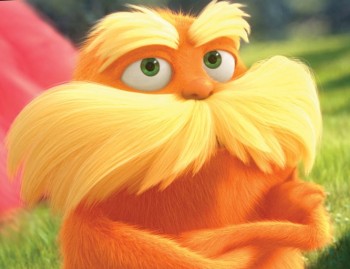 - I saw THE LORAX. What can I say? It’s the biggest piece of crap this side of 2012. This is further proof to me that CGI is not animation but bad puppetry done with machines. At least that’s what it felt like. The characters just kept moving – pop, move – pop, move – pop, move – until they stopped in any given scene. Those movements were all tied to some of the worst VO shouting, screaming, racket I’ve heard in a while. It’s like they kept trying to wake me up, but they had a mini story that spoke about nothing. Only an idiot like Lou Dobbs could attack this as “Liberal.”
- I saw THE LORAX. What can I say? It’s the biggest piece of crap this side of 2012. This is further proof to me that CGI is not animation but bad puppetry done with machines. At least that’s what it felt like. The characters just kept moving – pop, move – pop, move – pop, move – until they stopped in any given scene. Those movements were all tied to some of the worst VO shouting, screaming, racket I’ve heard in a while. It’s like they kept trying to wake me up, but they had a mini story that spoke about nothing. Only an idiot like Lou Dobbs could attack this as “Liberal.”
I’m not sure the performances always felt bad, but the manipulation, choices, cutting of those tracks and combined with the gloopy colors and continual, non-centered movement. ECH! I was shouted down for what felt like two hours – I know, it was actually only 86 minutes, but that’s a big chunk of my life that’s gone, and it felt like two hours. (Actually there were a couople of dance moves the Ed Helms character had that were clean, but that’s about all that I saw.)
This was the #1 film in the country last week. No doubt this is the same country that is buying into the robocall Republicans accusing women of everything under the sun and trying to set the clock back to 1962. I’ve got to clear my palette. We’ll see if this miniscule but LOUD film can beat out the legions backing John Carter.
- I keep going back to ARRIETTY, but I have to say I think back on that as a style that didn’t quite work for me. It felt a bit pinched. I’d have preferred a looser design more like Spirited Away or Ponyo, Very Anime in many ways.
However, the character animation, I think, is some of the best we’ve seen from Ghibli. On all of the principal characters (with the exception of the annoying mother character), I found the motion of the characters really trying hard to be part of character development. I think specifically of a number of scenes.
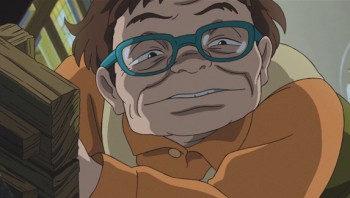 There’s a small scene where Haru (the Carol Burnett dubbed character – and I was surprised at how great a job Ms. Burnett did) stands over a small table. She is going through a simple, and basic action, but she loses her balance for a millemeter of a second and recovers. This is not something done by the books. It’s purely a motion that is put into the context of the scene she’s in, and it gives some credence to the odd character. I wish I had a dvd of the film, so I could show off some frame grabs detailing what I’ve seen.
There’s a small scene where Haru (the Carol Burnett dubbed character – and I was surprised at how great a job Ms. Burnett did) stands over a small table. She is going through a simple, and basic action, but she loses her balance for a millemeter of a second and recovers. This is not something done by the books. It’s purely a motion that is put into the context of the scene she’s in, and it gives some credence to the odd character. I wish I had a dvd of the film, so I could show off some frame grabs detailing what I’ve seen.
Eventually.
There, I feel better. I can block out that American Crap, now.
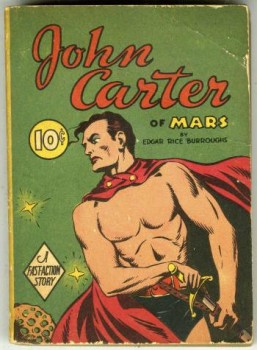 A.O.Scott kinda half liked it in his NYTimes review:
A.O.Scott kinda half liked it in his NYTimes review:
- Directed by the Pixar fixture Andrew Stanton (“Finding Nemo,†“Wall-Eâ€) and based on a 1912 magazine serial by Edgar Rice Burroughs, it is a potpourri of arcane and familiar genres. “Mash-up†doesn’t begin to capture this hectic hybrid; it’s more like a paintball fight.
- “John Carter†tries to evoke, to reanimate, a fondly recalled universe of B-movies, pulp novels and boys’ adventure magazines. But it pursues this modest goal according to blockbuster logic, which buries the easy, scrappy pleasures of the old stuff in expensive excess. A bad movie should not look this good.
Lou Leminick of the NYPost wrote in his ONE STAR review:
- Interminably long, dull and incomprehensible, “John Carter’’ evokes pretty much every sci-fi classic from the past 50 years without having any real personality of its own.
You could say much the same about the title character, as uncharismatically played by the unfortunately named Taylor Kitsch of TV’s “Friday Night Lights.’’ Even in 3-D, he’s barely one-dimensional
and
Joe Neumaier of the Daily News wrote:
- ‘John Carter’: Silly sci-fi fantasy isn’t out of this world, but it can be playful and down-to-Earth.
- There’s little here that hasn’t been seen before, which to some people is sorta the point. Stanton, a co-founder of Pixar and director of the unassailable “Wall-E,†lets “John Carter†wear its heart on its loincloth, and he never lets the often clunky-looking effects — essentially they’re “Dune†done well — overwhelm the humans.
Those humans, though, do feel like they were cast from the backlot of a miniseries set in Rome. The aptly named Kitsch is never dull and lunkheaded like similar movie warriors Sam Worthington and Jason Momoa, but neither does his sinewy grunge look mix with the late-19th-century earthly story or the sandy alien landscapes.
I have a screening I can attend of the film this coming Tuesday. After I do, I’ll let you know what I think (not that my opinion on this kinda stuff really matters.)
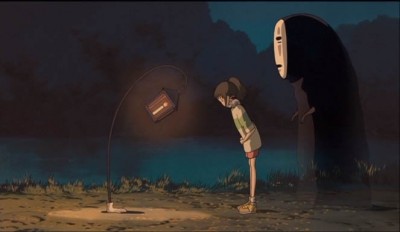 I actually have been so deeply into Spirited Away that I was going to write at length about that film. I can’t tell you how much time I’ve spent with the movie. It just keeps getting deeper for me. The animation is all serviceable and some of it is excellent; I see Ghibli really going through animation changes on this film and upcoming ones. We seem to have nothing comparable happening in the US just now, everything’s gotten so tiny here. The Brits are still doing some wonderful work, and the French have some remarkable animation. I keep watching.
I actually have been so deeply into Spirited Away that I was going to write at length about that film. I can’t tell you how much time I’ve spent with the movie. It just keeps getting deeper for me. The animation is all serviceable and some of it is excellent; I see Ghibli really going through animation changes on this film and upcoming ones. We seem to have nothing comparable happening in the US just now, everything’s gotten so tiny here. The Brits are still doing some wonderful work, and the French have some remarkable animation. I keep watching.
Anyway, I haven’t really spilt my mouth with the Spirited Away in me. Miyazaki is just a force for me to watch. I’ve gone back to see some of his earlier features, and watch how they’ve reinforced and helped realize future works. Something like Kiki’s Delivery Service is a bit flat for me, but the story’s character development is the center of the film for Miyazaki, so I understand its place in his history.
I’ve got to watch Totoro again. It’s such a simple, lovely film. Maybe later today. I remember, years ago, someone introducing himself to me at an Ottawa Animation Festival and giving me a copy of the DVD telling me it was his favorite film, and he wanted to share it with me. It wasn’t a copied DVD; it was an unopened, store-bought copy.
That film was an enlightening discovery. (Unfortunately, I don’t know who that who gave me the DVD. Please to reveal yourself if you read this. I’m enormously grateful.)
That is a gem of a movie. There’s the inspiration.
 - Jenny Lerew, on her blog, The Blackwing Diaries, has an excellent post about character and story. She has been a principal in many a theatrical film’s story development, and she knows what she’s talking about. It’s a good read, and I encourage you to take a look.
- Jenny Lerew, on her blog, The Blackwing Diaries, has an excellent post about character and story. She has been a principal in many a theatrical film’s story development, and she knows what she’s talking about. It’s a good read, and I encourage you to take a look.
This post actually adds to one she reworked in the past week. It’s a look into some of the later Disney features (pre Beauty & the Beast) where character took precedent over story. (Jungle Book, anyone?). If you have interest in story development, in this day of bad story writing, you should read both.
Commentary &Independent Animation 03 Mar 2012 06:11 am
More Crits, Quips and Cracks
- Last week I wrote about my reading Andrew Osmond‘s BFI monograph for the film Spirited Away. I quite enjoyed the short book and immediately read through it twice. Of course, I also enjoy Miyazaki’s film Spirited Away, so I had a lot to visit in the read.
In the rear of the book, there are notes and references for further reading. One of these was a commentary article by Michael Barrier which is still posted on his site, about Monsters Inc. and Pixar’s animation as well as mention of a couple of Miyazaki films, Princess Mononkone and Spirited Away.
My first thought on going back and rereading Mike’s article was in how much the comment and material holds up over the years. There’s some very specific arguments being made about the animation of all the films mentioned, and I can’t take issue with much of what he has to say.
I’d like to quote a few paragraphs from this article:
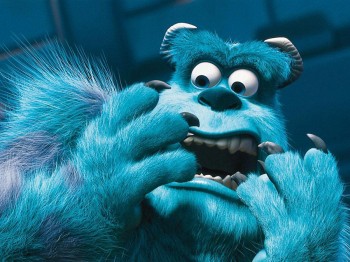 Computer animation’s technology has from all appearances advanced at an even faster rate than the techniques of the Disney animators in the thirties. It’s becoming clear, though, that, in contrast to what happened seventy years ago, there’s no necessary connection between mastering the technology and putting more convincing characters on the screen. When a character is covered with millions of precisely rendered hairs, and his on-screen environment is richly three-dimensional, it’s reasonable to expect him to move with a real creature’s subtlety. Sulley does not pass that test. He is less persuasive than many drawn characters whose caricatured movements are simpler and more direct. It is Sulley’s voice (by John Goodman) that brings him to life, far more than the animation; in that respect, the Pixar characters are indistinguishable from Homer Simpson or, for that matter, Huckleberry Hound.
Computer animation’s technology has from all appearances advanced at an even faster rate than the techniques of the Disney animators in the thirties. It’s becoming clear, though, that, in contrast to what happened seventy years ago, there’s no necessary connection between mastering the technology and putting more convincing characters on the screen. When a character is covered with millions of precisely rendered hairs, and his on-screen environment is richly three-dimensional, it’s reasonable to expect him to move with a real creature’s subtlety. Sulley does not pass that test. He is less persuasive than many drawn characters whose caricatured movements are simpler and more direct. It is Sulley’s voice (by John Goodman) that brings him to life, far more than the animation; in that respect, the Pixar characters are indistinguishable from Homer Simpson or, for that matter, Huckleberry Hound. And about Spirited Away:
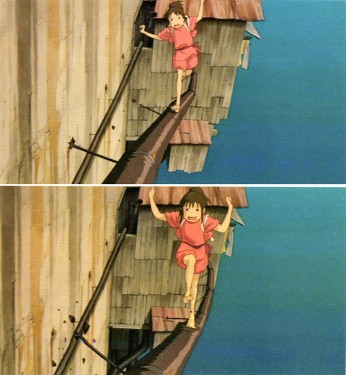 Stylization, the ready answer, or excuse, for Japanese animators’ cavalier handling of their characters, doesn’t really serve in Miyazaki’s case, because he is so good at atmospherics—his settings seem real even when the characters don’t. To the extent that Chihiro, Miyazaki’s ten-year-old protagonist, wins our sympathy, it’s not because the animation brings her to life (except perhaps in fleeting moments when she slips into the paralysis of fear), it’s because Miyazaki places her in an environment as persuasively weird as those in the most obvious of his sources, Lewis Carroll’s Alice in Wonderland and Through the Looking Glass. But how much more powerful the film would be—how much more involving—if Chihiro had been animated so that she were wholly present on the screen . . .
Stylization, the ready answer, or excuse, for Japanese animators’ cavalier handling of their characters, doesn’t really serve in Miyazaki’s case, because he is so good at atmospherics—his settings seem real even when the characters don’t. To the extent that Chihiro, Miyazaki’s ten-year-old protagonist, wins our sympathy, it’s not because the animation brings her to life (except perhaps in fleeting moments when she slips into the paralysis of fear), it’s because Miyazaki places her in an environment as persuasively weird as those in the most obvious of his sources, Lewis Carroll’s Alice in Wonderland and Through the Looking Glass. But how much more powerful the film would be—how much more involving—if Chihiro had been animated so that she were wholly present on the screen . . .Mike is definitely right. The animation of the early, pre-Brad Bird Pixar films is not quite sophisticated enough to take control of the well performed celebrity voices that dominate the characters. (Bird, I think, was able to coax bits of fine original animation out of the animators and the complex system of cgi animation.) Likewise, through Spirited Away, I see a simplicity in the animation of the characters. However, it is with this film that I believe some real animation starts to enter the Miyazaki films. The scene where Chihiro crosses a treacherous metal pipe outside the bath house. The character makes a strong change in personality with this animation, and it has to be taken note that this is not in the voice over but in the artwork. Miyazaki made the choice to change the personality here against the arguments of his animation director, and we can see that the character development has clearly stepped into the studio’s animation, no matter how slowly. From this point forward, Chahiro has a marked change in her character.
Yes, as Mike suggests, the atmospherics have strongly supported the obvious animation, up to this point, but I believe something stronger is entering the films.
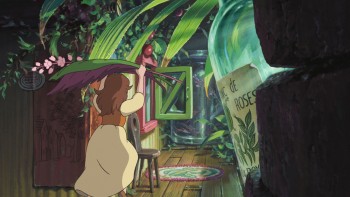 This to me is quite clear in seeing The Secret World of Arrietty. Things have taken an enormous leap, and some of the animation is very personable, completely without artifice and wholly based on human action and interaction. Certainly, it still has many wooden scenes, but there is enough original work in there, that I have to have enormous pleasure in witnessing real 2D animation making its presence felt. This non-generic animation is hard to find in western work, and that’s almost inexplicable to me.
This to me is quite clear in seeing The Secret World of Arrietty. Things have taken an enormous leap, and some of the animation is very personable, completely without artifice and wholly based on human action and interaction. Certainly, it still has many wooden scenes, but there is enough original work in there, that I have to have enormous pleasure in witnessing real 2D animation making its presence felt. This non-generic animation is hard to find in western work, and that’s almost inexplicable to me.
Mike Barrier in his commentary article on Disney’s Tangled has different thoughts about cgi animation. I have to say I don’t quite agree with him on this film, but I understand what he has to say.
- Where CGI is concerned, it seems to me that a complete naturalness in the characters’ movements, like that in parts of Tangled, does not limit the animators to a deadening literalness. Instead, it creates the potential for more subtle and expressive animation of a distinctly non-literal kind, just as the Disney animators’ growing mastery of hand-drawn animation in the 1930s meant that cartoon characters like the Seven Dwarfs could be more insistently present on the screen than characters that were drawn with superficially greater realism.
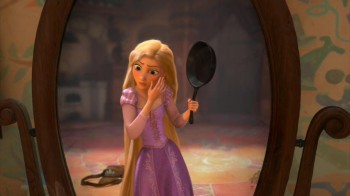 Where Mike sees glimmers of a reality in the animation, I see it all ripped away by generic popping movements, oftentimes covered with blurred motions. What you get are the slow moving gestures immediately followed by popping cartoon-like actions. This goes for both Rapunzel and her Prince. The end result is that their motions, to me, are identical, and there is no personality shining through beyond the voice acting (which I don’t think is great. Mandy Moore couldn’t be more generic.) The realistic movements, to me, are with the witch/stepmother. Here, Donna Murphy‘s voice over has a lot to do with the character, but I don’t discount what the character, herself, is doing in the animation.
Where Mike sees glimmers of a reality in the animation, I see it all ripped away by generic popping movements, oftentimes covered with blurred motions. What you get are the slow moving gestures immediately followed by popping cartoon-like actions. This goes for both Rapunzel and her Prince. The end result is that their motions, to me, are identical, and there is no personality shining through beyond the voice acting (which I don’t think is great. Mandy Moore couldn’t be more generic.) The realistic movements, to me, are with the witch/stepmother. Here, Donna Murphy‘s voice over has a lot to do with the character, but I don’t discount what the character, herself, is doing in the animation.
In short, I have to say that there’s a veritable treasure trove of material on Mike Barrier‘s site. Dig in and take a look at some of these articles. His is a singular, articulate voice, and there’re books worth of ideas and living commentary on this site. And it’s all for free. but then if you really love animation, you already know this.
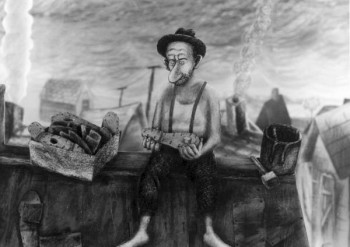 - I’m pleased to see that Ian Lumsden has returned to posting more videos on his blog, The Animation Blog. Ian’s taste is quite fine, and the work posted is always of a generally high caliber. Recently he posted Eugene Federenko and Rose Newlove‘s beauty of a film, The Village Idiots. Federenko is an artist of the most devoted kind, and to watch his films is always my pleasure. Believe me, I’ve seen many of them MANY times, and the welcome doesn’t wear thin for me.
- I’m pleased to see that Ian Lumsden has returned to posting more videos on his blog, The Animation Blog. Ian’s taste is quite fine, and the work posted is always of a generally high caliber. Recently he posted Eugene Federenko and Rose Newlove‘s beauty of a film, The Village Idiots. Federenko is an artist of the most devoted kind, and to watch his films is always my pleasure. Believe me, I’ve seen many of them MANY times, and the welcome doesn’t wear thin for me.
Such films as Mr. Federenko’s makes me long for the National Film Board of even fifteen years ago when capital was a little more available, and the beautiful films
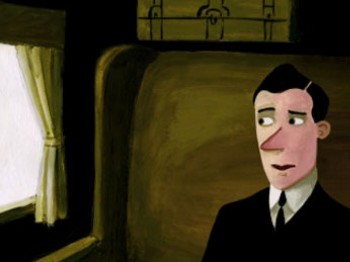 were plentiful. (I’m grateful for any short they’re still making and I wait for them at Festivals and Academy runoffs. This year’s Wild Life by Wendy Tilby and Amanda Forbis and Dimanche by Patrick Doyon were both superb gems, and those filmmakers deserved the high praise they received in being nominated for the Oscar. I’d hoped for Wild Life to win, but am pleased they got as far as they did. It’s story is the best of those that were in the running.)
were plentiful. (I’m grateful for any short they’re still making and I wait for them at Festivals and Academy runoffs. This year’s Wild Life by Wendy Tilby and Amanda Forbis and Dimanche by Patrick Doyon were both superb gems, and those filmmakers deserved the high praise they received in being nominated for the Oscar. I’d hoped for Wild Life to win, but am pleased they got as far as they did. It’s story is the best of those that were in the running.)
- The Oscars came and went, and neither of my animation choices won, though I’m not ocmpletely dissatisfied with Rango‘s win. At least it was the more eccentric of the cgi films.
As for The Fantastic Flying Books of Mr. Morris Lessmore, I find the film completely opaque. It’s obviously and attractive and seems to think it’s about something, but I’ll be damned if I can understand it. Except that the guy likes books and doles them out from his ersatz library in the middle of nowhereland. Oh yes, he’s lonely. All he has is a Humpty Dumpty animated illustration book to keep him in good company.
This is one of those design-y stories where everything is built around conceit, and the audience is fed schmaltz about nothing. It’s a poor meal to swallow.
A film like Wild Life is about many things and told its story beautifully, graphically and was well animated.
Just the same, congratulations to William Joyce and Brandon Oldenburg
I’m pleased that they’re onto other projects at Moonbot Studio.
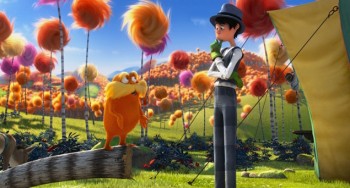 - Of the local critics, AO Scott of the NYTimes was particularly harsh on THE LORAX
- Of the local critics, AO Scott of the NYTimes was particularly harsh on THE LORAX
- Don’t be fooled. Despite its soft environmentalist message “The Lorax†is an example of what it pretends to oppose. Its relationship to Dr. Seuss’s book is precisely that of the synthetic trees that line the streets of Thneedville to the organic Truffulas they have displaced. The movie is a noisy, useless piece of junk, reverse-engineered into something resembling popular art in accordance with the reigning imperatives of marketing and brand extension.
and then later in the review . . .
- In the film as in the book, the Once-ler ravages the landscape and destroys the Truffula trees to manufacture thneeds, knitted garments that have multiple uses but no real utility. Demand for them is insatiable for a while, and then, once the trees are gone, the thneeds are forgotten, partly because nobody really needed them in the first place. There is an obvious metaphor here, but the movie is blind to it, and to everything else that is interesting or true in the story it tries to tell.
It sounds like the trailer I saw for the film, as I waited patiently through many animated junk trailers, on the way to see The Secret World of Arrietty in a theater. The film screens for Academy members on this upcoming Thursday. Maybe I’ll muster the courage to sit through it.
But then, Eliabeth Weitzman in the NYDaily News seemed to enjoy the film calling it, “A Tree-mendous Animated Movie.”
- While softening Geisel’s darker themes, they still meld a valuable message into catchy songs, bright images (nicely done in 3D) and funny characters.
- Even adults are likely to walk out wondering how our own society has strayed so far from any sensible path … before hopping into their Lorax-approved Mazda and heading to IHOP for some Truffula Chip pancakes.
And, finally, the NYPost‘s Kyle Smith is merciless:
- I am the critic, I speak to displease:
“The Lorax†is awful, like chronic disease.
There’s no fun in “The Lorax,†no joy in its theme;
It’s as boring as sales tax.
I’m ready to ream.
Commentary 25 Feb 2012 07:25 am
Cracks, Quips and Crits
- Today in Hollywood, the Animation Guild, ASIFA-Hollywood and Women In Animation will present “An Afternoon of Remembrance,” a celebration of some of those from our animation community who died in the past year. Among those scheduled to be remembered include a number of East Coast artists as well as several Independent animators.
Karen Aqua, Jordan Belson, Robert Breer, Vincent Cafarelli, Don Christiansen, Cornelius “Corny†Cole, Del Connell, Ray Dieter, Norm Gottfredson, Bill Justice, Earl Kress, Dorse Lanpher, Dwayne McDuffie, Dan Mills, Barney Posner, Hal Silvermintz, Paul Somner and others will be brought to a small communal closure.
I couldn’t praise the three organizations any more for doing such important work for the community. It’s a very sad event, but one that is an absolute necessity given the rising ages of many of our forbears. I only wish that I were in Hollywood to be able to attend such an event and to honor some of those veterans that came before us.
The Afternoon of Remembrance is free of charge and is open to all.
No RSVPs necessary.
Food and refreshments, 12 noon, Memoriams, 1 pm.
The Hollywood Heritage Museum (Lasky-DeMille Barn)
2100 N. Highland Ave. (across from Hollywood Bowl) in Hollywood, California.
The brilliantly talented Jeff Scher has posted a new advert he’s done for the latest Ann Arbor FIlm Festival. The ad, itself, should win the film festival’s top prize, if you ask me. Once again, Scher works with the very talented composer, Shay Lynch, who’s take a rock turn for the music to the spot. Hi energy for 30 secs. Worth watching a number of times.
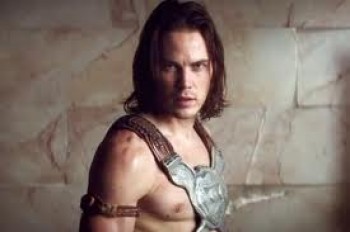 – There’s a lot of dirt being thrown about the Disney studio of late and the source of it all seems to be pointed at Andrew Stanton‘s live action film debut. John Carter of Earth, is the source of all the trouble. An article in The Beast reveals a lot when it talks about Disney Chairman Rich Ross‘ job being in trouble for the ever expanding $250 million budget.
– There’s a lot of dirt being thrown about the Disney studio of late and the source of it all seems to be pointed at Andrew Stanton‘s live action film debut. John Carter of Earth, is the source of all the trouble. An article in The Beast reveals a lot when it talks about Disney Chairman Rich Ross‘ job being in trouble for the ever expanding $250 million budget.
- John Carter is . . . the kind of cautionary tale that keeps studio chiefs popping Ambien at night: a vanity project with sky-high expectations and a humongous budget* that now seems destined to land with a massive thud at the box office—unless it can somehow rake in more than $400 million to break even. In other words, it’s the kind of movie that causes heads to roll.
Stanton has denied that the budget had reached a quarter of a million dollars, but Disney seems to be stating that that’s the case. Everyone at Disney points to the film as a failure and they’re all expecting to see heads roll. Let’s hope there will be room for Stanton to get back into animation. I’m sure Pixar will be looking to do another Finding Nemo eventually.
Nothing in the trailers I’ve seen has made me excited about seeing this film, and of course I’m not being fair. However, the multiple computerized crowd scenes just reminds me of schlocky The Mummy Returns kind of thing, but this film doesn’t even have a Brendan Fraser at the center of the movie. Even that wouldn’t be enough for me to tolerate one of these overblown Hollywood epics that are never very epic – just loud. But, as I say, I might be wrong and will reserve my last judgment until I see it. I’m just not looking forward to it.
I still would have liked to have seen what Bob Clampett
would have done with this way back when.
Oh well, dreams of a rarebit fiend.
____________________
Executive Shuffle
- After Rango reaped a giddy success for Paramount Pictures, the movie company decided to set up their own Animation division. They put executive, David Swainton, in charge and they were off to the movies. Or so one would have presumed. Now Variety reports that Swainton, just four months into the job, has quit his post “for personal reasons/” Although Paramount had wanted to turn out one film a year beginning in 2014. As Variety writes:
- “At the time, the news was seen in part as a negotiating tactic with DWA, whose distribution deal with Paramount was set to expire at the end of 2012. Both parties asserted that the division would have no affect on negotiations — which weren’t even supposed to begin until early 2012. But sources outside the studio saw the initiative as leverage that Paramount could bring to the table.
“Though no film has yet been slated for release, studio has said several viable projects are in the works, including an adaptation of the graphic novel “New Kid.”
Paramount Motion Picture Group prexy Adam Goodman will take charge of the animation development team.
Fleischer Multiplane
- Looking back to Paramount Pictures animation division in 1938, Nicholas John
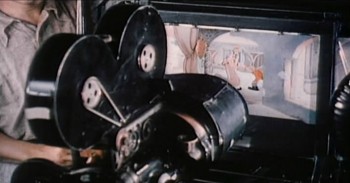 Pozega posts on his blog, Classic Cartoon Reviews, a number of screen grabs showing Max Fleischer and his 3-D setback animation camera.
Pozega posts on his blog, Classic Cartoon Reviews, a number of screen grabs showing Max Fleischer and his 3-D setback animation camera.
The images are sharp, informative, and worth a look. Mr. Pozega pulled them from a “Popular Science” reel on the DVD “Popeye the Sailor: 1938-1940″. If you continue to scroll down on his blog there are also other newsprint images of the camera.
Spirited Away : BFI Monograph
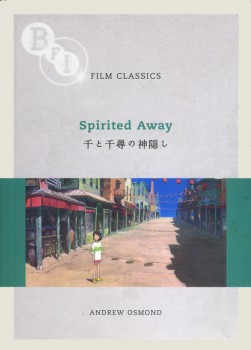 - After seeing The Secret World of Arrietty, I really got into the Miyazaki mode and have dug into a DVD set I own of his features up to including Spirited Away. They’re all in Japanese with English and/or Chinese subtitles, so there’s some purity in the viewing.
- After seeing The Secret World of Arrietty, I really got into the Miyazaki mode and have dug into a DVD set I own of his features up to including Spirited Away. They’re all in Japanese with English and/or Chinese subtitles, so there’s some purity in the viewing.
However, I’ve also been reading a wonderful monograph written by Andrew Osmond in 2008, Film Classics: Spirited Away. I raced through this book and have gone back to the front and am reading it again. It’s a very open-minded reading of the film taking in many of the negative critiques that came with the film and addressing some of them quite well. I’ve gotten quite a bit out of the book and wish Mr. Osmond had done similar works for other Miyazaki films. I’ll have to reread his 100 Animated Feature Films again. I wasn’t very positive about the book when I originally commented on it, in that I didn’t quite understand the reasoning behind the selection of titles chosen for that book. However, Mr. Osmond writes with such strength and self-confidence that he covers a lot of good territory. I’ll have to see if I think differently this time out.
I do recommend the BFI monograph, Film Classics: Spirited Away, though. It can be picked up a Amazon, of course.
A Beauty Awakens
Hans Perk on his excellent site, A Film LA, has shown us another side to the development of Disney’s feature, Sleeping Beauty. For the most part, we’re accustomed to the noble and stylized images from the hand of Eyvind Earle, the stylist who ultimately dominated that feature and made it the film we all know and cherish. However, Hans features some preliminary art by Danish illustrator, Kay Nielsen. Nielsen died in 1957 during the production of the feature.
To date only the one illustration he’d done, which appeared in John Canemaker‘s book, Before the Animation Begins, had come to light. Now Hans introduces us to more of this art which has recently come to light.
This website is one of my favorites. A great resource if there was one.
Animation &Commentary 24 Feb 2012 07:51 am
Pops and Smears
- In reviewing The Secret World of Arrietty, the brilliant new Ghibli film, I wrote about the fluidity of their animation and its basis in a real rather, than a cartoon world. Unfortunately, most of the animation done in features coming from the Western world (specifically the US world) is done in a cartoon way using pops and smears. This affect creates cartoon characters and clichéd ones at that. It’s not a type of animation I love for feature films.
Of course, if you’re designing an Aladdin, where the Robins Williams/Eric Goldberg Genie is a hyper cartoon character, that’s the only way to go – stylized cartoon. That was its natural design. But for 101 Dalmatians/Peter Pan/Beauty and the Beast – no. That’s not what you should be doing. However, it seems to be the only way to go in the films coming out of Hollywood.
I thought, over the course of a couple of posts, I’d give a couple of good examples of these pops and smears I’ve been bothered with in the recent past. Let’s start with “smears” 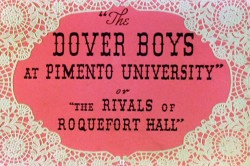 something I find particularly egregious in animation pretending to create a “real” world.
something I find particularly egregious in animation pretending to create a “real” world.
To show what I’m talking about, here’s an example from the first real – and I might say brilliant – use of this technique.
Animator, Bobe Cannon, together with director, Chuck Jones, came up with the technique for the outstanding Dover Boys film.
Here’s our villain, the main target of the smeared frames:
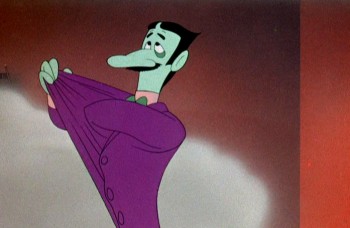 1
1It’s the villain that moves in exaggerated smears.
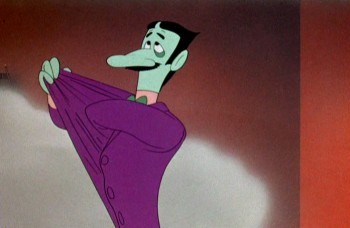 2
2
He moves slowly at start and stop of moves.
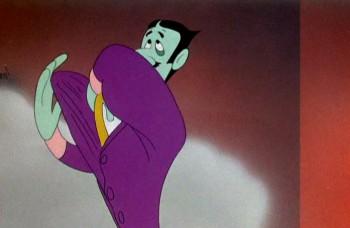 3
3
But moves wildly in between phrases of dialogue.
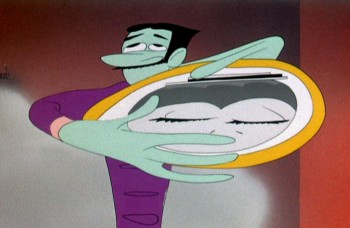 4
4
The middle poses couldn’t be wilder or faster.
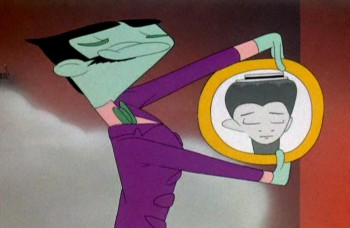 5
5
And comes to quick halting stops with small patches of dialogue.
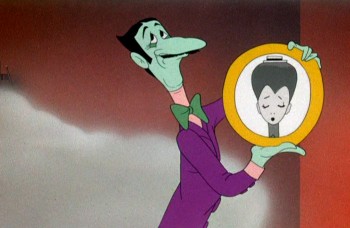 7
7
Then, if anything, we’re going wilder.
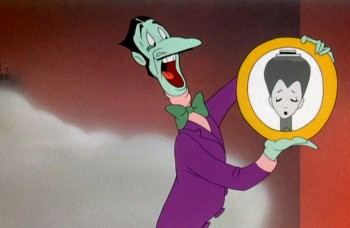 8
8
Slowly out of quiet hard pose . . .
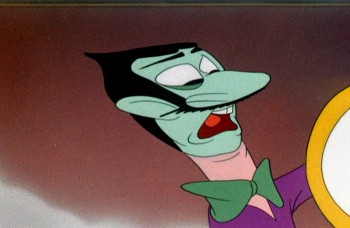 9
9
WILD as Jones backs the animation move with a tighter cut . . .
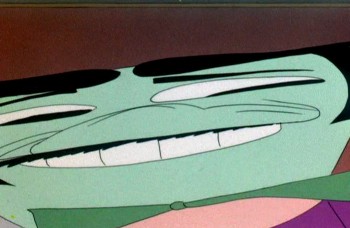 10
10
. . . and a wild camera move.
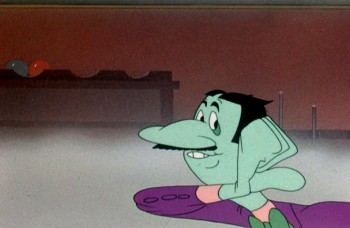 14
14
Come down to another solid, hard pose and move dialogue.
Here’s a later sequence as the villain kidnaps our heroine.
All cartoon, all comedy, all arch, all on purpose.

He moves wildly via smears inbetween phrases of dialogue.

Line of dialogue – move – dialogue – move.

Every action comes off the exaggerated speech by the arch ( and I do mean arch) villain.
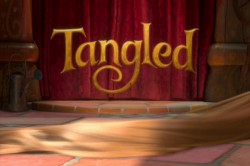 Tangled is a tangled version of the brilliant fairy tale, Rapunzel. The makers have completely distorted the tale to a mish-mash point where it makes no sense, but that’s irrelevant to this post. What is relevant is that they continually rob the characters of a reality by pushing, rubbing and smearing them throughout.
Tangled is a tangled version of the brilliant fairy tale, Rapunzel. The makers have completely distorted the tale to a mish-mash point where it makes no sense, but that’s irrelevant to this post. What is relevant is that they continually rob the characters of a reality by pushing, rubbing and smearing them throughout.
The first example of this technique shows up as Rapunzel opens her window. Technically, you start slow, you compress the middle to one or two images, and you slow out over a long beat. The inbetween chart would look something like this:

Here’s Rapunzel opening her window:
It’s not really a human motion; it’s a cartoon motion. But it’s subtle enough this first time, that we can get away with it. Let’s just call it fast. However, too often the animation falls into this mode, and by midway through the film, there are no real characters left; just cartoon characters.
I take that back. Mother Goethels is always true to a human animation style. She is a real character, and Donna Murphy’s performance grounds it behind the fine animation by Jamaal Bradley, Nik Ranieri and others.
The most egregious in using these smears is the horse character, but if it were only that one, it would work. The horse is a stand-alone. It’s personality IS a cartoon. The horse, after all, isn’t a horse in this film. It’s shaped like another Disney horse, but it moves more like a dog. And it’s ALL pops and smears.
Look at these frames of it getting up from the ground, lickety-split:
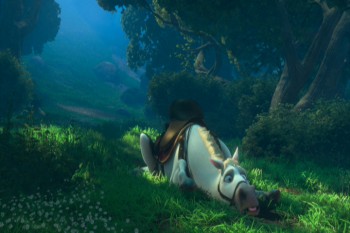 1
1
The move above is funny, not based in reality. What we have is a cartoon horse. This is not the horse Prince Phillip rides in Sleeping Beauty. It’s not even a good caricature of it.
The unfortunate part is that what Bobe Cannon did in the Dover Boys can’t easily be done in cgi. The Dover Bioys employed the brilliant cartooning of Cannon; cgi is really just a playing with computerized puppetry. You can stretch and squash somewhat, but distorting as desired isn’t always possible. So they stretch and squash and do very fast motions and hide it all under a veneer of out-of-focus. It ends up looking like just fast motion and not a true distortion – as they probably desired. The best you can hope for is image #3 just above. Now compare that to image #10 in the Dover Boys group. Not quite the same are they.
God forbid someone in cgi wants to do what Jim Tyer did. It’s impossible.
Here’s one last horse. We start rock steady – then zip, blur, stream. Ease in and race back out – zip, blur, stream. To be honest, I’m not sure what’s even happening in this scene (the horse is somehow changing into rock and vegetation?), but I let it go past as cartoon.
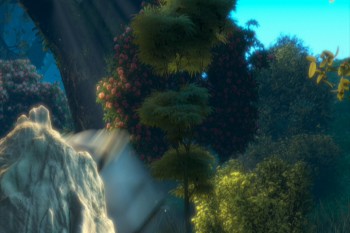 1
1
To sum up what I’m trying to say. Animated features have sunk their heads into the ground. Everything has become arch and stupid. We’re not trying to develop characters but, instead, trying to do some wild movement. Movement that has nothing to do with character development. That’s a problem, if you ask me.
If you want to imitate Tex Avery or Bob Clampett, fine. If you want a seriously developed non-cartoon character, then stay away from pops and smears. It works for Aladdin, but it also limits feature films. I think Tangled is a good example of that. Outside of a few characters, I see little believable animation there. It’s all just tricks and stunts that pulls away from true, honest animation. It’s a comment on a character rather than a development of the character.
Of course, that’s my opinion. It’s so obvious to me when you see a Ghibli product like The Secret World of Arrietty or anything Mayazaki does. Their animation grows more and more subtle while Hollywood moves in the opposite direction – gags and clichéd actions. I don’t understand why Disney product approves of this. Thank god for animators like Andreas Deja who refuses to go this route, and is in absolute control of the characters he animates. There are others like him, and I applaud those artists. I wish they were all of that shape and belief.
Commentary &Photos &Steve Fisher 19 Feb 2012 06:58 am
Arrietty and the Wastewater Treatment Plant
- Yesterday, I wrote a bit about The Secret World of Arrietty, the newly opened Ghibli film that was planned and co-written by Hayao Mayazaki and was directed by Hiromasa Yonebayashi, the studio’s youngest director.
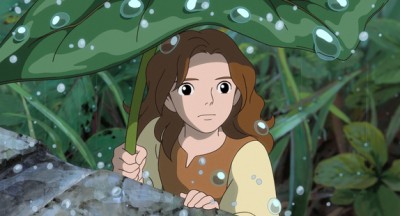 I went to see the film last night and have to say I proceeded with a bit of trepidation. Without Mayazaki, himself, directing I was not confident that the film would deliver all I wanted. This was a mistake on my part; the film is superb. It’s right in line with the canon of films the studio has recently been producing. It isn’t as emotional as Ponyo, nor as spiritual as Spirited Away, but the film, to me, comes closest in mood to My Neighbor Totoro.
I went to see the film last night and have to say I proceeded with a bit of trepidation. Without Mayazaki, himself, directing I was not confident that the film would deliver all I wanted. This was a mistake on my part; the film is superb. It’s right in line with the canon of films the studio has recently been producing. It isn’t as emotional as Ponyo, nor as spiritual as Spirited Away, but the film, to me, comes closest in mood to My Neighbor Totoro.
The film starts as did Spirited Away. We follow the rear of a car as it approaches a country house. Like Totoro, there is a move to the rural area. In Totoro, the two girls are moved closer to the hospital where their sick mother is staying. In Arrietty, the boy is moving to the more natural and quieter setting so he can rest prior to a heart operation.
Within the house, where he is to spend some time resting, lives Arrietty a girl about his age who is only four inches tall. She lives with her parents. and they’re not sure if they’re the last of the “Borrowers,” as these small people are known. The boy sees the tiny girl and does all in his power to make friends with her. Arrietty knows that once their secret is revealed the comfortable family must move to another location. They can’t allow the curiosity of the “Beans” (Human Beings) to endanger their lives or freedom.
The film, like all recent Ghibli works, shows a wonderful interaction between plant, animal and human life. We’re all of the same mold, and we all have to treasure the existence of what is around us. It’s a wonderful and precious theme, and I relish their insistence on placing focus on it from film to film. This, to me, ties the work together wonderfully.
The animation is excellent at every turn albeit very gentle. There are always beautiful and subtle motions in the character movement, and each character is developed visually as well as emotionally. This is not something I much feel from animation I’ve seen in Western films recently. Ghibli is not forcing clichéd motion on their characters – such as popping zip actions for everything that moves. It’s a natural animation that I find wonderful to absorb.
I wasn’t completely happy with the voice cast. I found Amy Poehler a bit too shrill and at times overacted, but Poehler’s husband, Will Arnett, does an excellent turn as the father. Most surprising to me was Carol Burnett who did a good job with her character, Hara. The two leads, Bridgit Mendler and David Henrie were also quite fine. Although Hendler’s song tagged onto the credit sequence by Disney is completely off.
See the film if you have any interest in excellent 2D animation or in Ghibli’s work. It’s a bravura performance, though very understated. Beautifully done work which is certainly better than any of the animated features from last year.
Now onto the photo essay for Sunday:
- My friend Steve Fisher sent in this photo essay, and the images are too curious to pass up. Something I don’t see very often – or even at all.
- Okay, so it may not have been the most romantic idea, but the chance to tour Polshek’s Newtown Creek Wastewater Treatment Plant, even on Valentine’s Day, was too good to pass up.

Line of “Digester Eggs†from street level
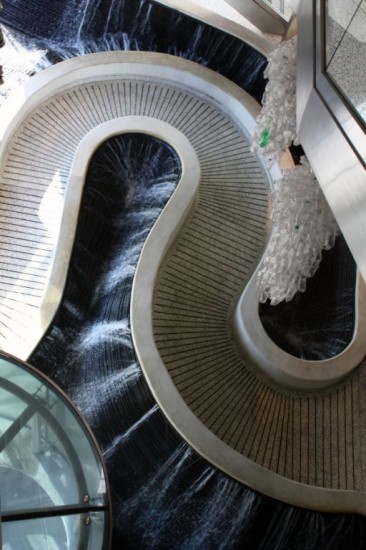
Visitor Center entrance lobby fountain

By-product Methane is used for heating the plant
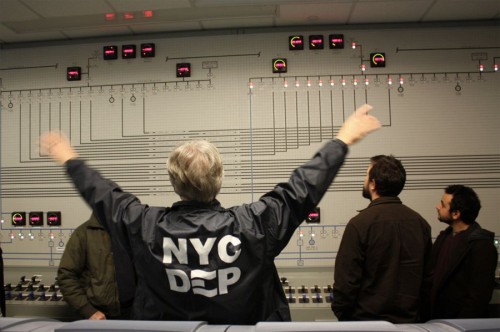
Jim Pynn explains that from this command station, six people
will control the entire 53-acre plant’s operation

Views of the plant from atop the digester eggs,
some 140 feet above the street on a skybridge

Digester egg from street and from skybridge
Animation &Commentary &Independent Animation &Richard Williams 18 Feb 2012 08:56 am
Sheldon Cohen & John Gaug and Arrietty and NAACP Image Award
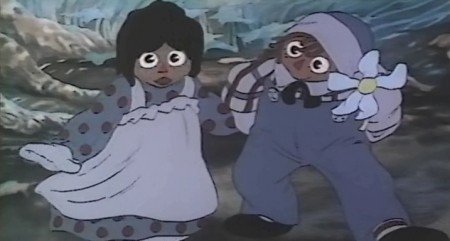
Tissa David‘s enormous seminal Raggedy Ann scene.
The rest of the film was built on the back of this one.
- Back in 1976, I was lucky enough to get hired onto Raggedy Ann and Andy, a feature film Bobbs Merrill was financing with Richard Williams as the newly employed director. I was the first non-animator hired (three animators were hired before me: Tissa David, Art Babbitt, and Emery Hawkins. Corny Cole was designing and doing the storyboard; Gerry Potterton was the assistant director.
When the studio was set up, with its headquarter in New York, they chose a space in a building that had entrances on 45th and 44th Streets just off 5th Ave. The space was enormous and dark. Many of the lights were usually left off. Sometimes the office manager, Bruce , would be there. but for the most part, while the voices were being recorded, I was alone in the space.
I decided to start buying animation desks and discs and other equipment. I did this and worked with someone to get holes cut and lighting set up in the desks. We started prepping partitions and just setting up everything. Once bits of animation started coming in Assistant Animators were hired. Jim Logan was the first, and he and I worked together for several months with little to do but laugh and do bits of inbetweening for animation tests.
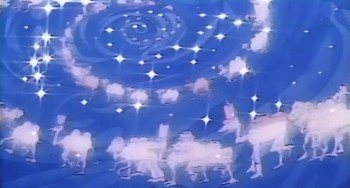 Dick Williams gave me a scene of a mirage the Camel with the Wrinkled Knees would have. 97 dancing camels spiraling into the distance would be superimposed over the Camel’s head. I worked for about six weeks on this one scene, and until I had to be taken off it. The scene near completion went to the newly hired John Kimball who was going to do a number of other similar scenes, and he’d build them all into the film. I moved to head of Assistants and Inbetweeners and definitely had a lot of work to do.
Dick Williams gave me a scene of a mirage the Camel with the Wrinkled Knees would have. 97 dancing camels spiraling into the distance would be superimposed over the Camel’s head. I worked for about six weeks on this one scene, and until I had to be taken off it. The scene near completion went to the newly hired John Kimball who was going to do a number of other similar scenes, and he’d build them all into the film. I moved to head of Assistants and Inbetweeners and definitely had a lot of work to do.
Hiring lots of people in New York and training many of the new faces was foremost. We ended up with seven rooms with about 15 Assistants and Inbetweeners in each room. Finding new people wasn’t always easy, and they didn’t all work out.
In 1976, the Ottawa Animation Festival had its inauguration year. (That was when Caroline Leaf took over the animation world, becoming a star with her film, The Street.) It was here that I went to look for talent, and I found it in several people. John Gaug came down from Atkinson Film Arts in Ottawa. He was a gifted talent and a very tight style. Sheldon Cohen was closer to my heart. His sensitive drawings and warm approach to the artwork made him a definite person to hire. After getting back to New York I let the powers-to-be know that I was hiring the two and made the calls. Both moved dpwn to the City.
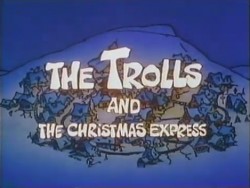 Both continued on after Raggedy Ann ended.
Both continued on after Raggedy Ann ended.
John Gaug moved on to the Williams studio in London where he became an animator, moved back to Ottawa to direct Trolls and the Christmas Express (where I animated freelance for him). Then he moved back to New York working in the commercial studios (I got to hire him again at R. O. Blechman’s studio) until he died in 1984.
.
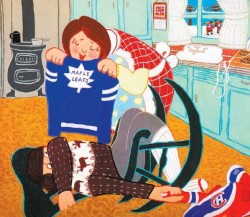 Sheldon Cohen moved back to Montreal where he became a unique artist for the National Film Board. He directed and animated a number of strong films. His most famous, The Sweater, showed an artist in full bloom seemingly right out of the box. He continues doing a number of children’s books and recently has written a oersonal memoir called This Sweater Is For You! published by ECW Press in Toronto. The book will soon be on the market, I’ll get a copy and will definitely review it. I’d also like to interview Sheldon about his 40 year career of making art.
Sheldon Cohen moved back to Montreal where he became a unique artist for the National Film Board. He directed and animated a number of strong films. His most famous, The Sweater, showed an artist in full bloom seemingly right out of the box. He continues doing a number of children’s books and recently has written a oersonal memoir called This Sweater Is For You! published by ECW Press in Toronto. The book will soon be on the market, I’ll get a copy and will definitely review it. I’d also like to interview Sheldon about his 40 year career of making art.

In the meantime, you can see a number of Sheldon’s films on the NFB site. I’ve linked those films below.
The Sweater is an adaptation of a Mordecai Richler short story.
I Want a Dog is based on the book by Dayal Kaur Khalsa.
Snow Cat starts out with the feel of the book Goodnight Moon
but soon turns to a very graphic and textured look.
It’s a 23 minute film with wonderful narration by Maureen Stapleton.
Pies, a film about blind prejudice, is based
on a short story by Canadian author Wilma Riley.
_______________________________________________________
Ghibli’s The Secret World of Arrietty opened yesterday to generally positive reviews.
- Manohla Dargis in the NYTimes praised the Ghibli approach to female characters, who often are the leads, but was bothered by some of the elements lost in adapting the original novel, however
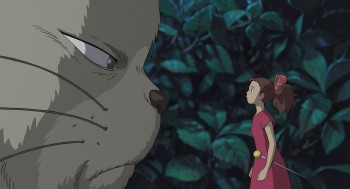 “. . . it’s initially a letdown that Arrietty and Shawn aren’t just friends, as in the book, but also something like impossible romantic foils. Yet this disappointment proves mostly premature because Studio Ghibli and Arrietty have a way of taking you where you may not expect, whether you’re scrambling through rooms as large as canyons or clambering into the safety of an outstretched hand, a simple gesture that says it all.”
“. . . it’s initially a letdown that Arrietty and Shawn aren’t just friends, as in the book, but also something like impossible romantic foils. Yet this disappointment proves mostly premature because Studio Ghibli and Arrietty have a way of taking you where you may not expect, whether you’re scrambling through rooms as large as canyons or clambering into the safety of an outstretched hand, a simple gesture that says it all.” - Lou Leminick in his 3 star review in the NYPost writes:
- Studio Ghibli is at the forefront of keeping traditional hand-drawn animation alive — and it works well even for a story that’s less fantastical than Miyazaki’s signature works.
- Many animated and live-action films have dealt with miniature humans, but few have depicted a sheer sense of scale as effectively as this one.
“The Secret World of Arrietty’’ is a feast for the eyes that will engage the entire family.
- Phillip French in The Observer writes a very positive review:
- At the heart of the film, is the tender, trusting friendship between Shawn, the boy of the house, and Arrietty. Theirs is a beautiful, perfect love, but ultimately doomed like so many relationships in myths and fairytales. This moving, amusing and resonant tale also touches on environmental and ecological concerns, on xenophobia and the fear of the threatening other. And it has taken on new meanings about the respect and preservation of disappearing species and the need to treasure and recycle valuable resources.
.
- Finally, the good news, last night, I won the NAACP IMAGE Award for Outstanding Children’s Program. I’m proud of this one, thankyou very much.
Outstanding Children’s Program
“A.N.T. Farm”
“Dora the Explorer”
“Go, Diego! Go! ”
WINNER: “I Can Be President: A Kid’s-Eye View”
“My Family Tree”
.
Commentary 11 Feb 2012 07:04 am
The Review revue
- The past week saw little Academy action. We’d seen the Documentary features last week. (Five films within six days.) I found none of them earth shattering. Two were very good:
Paradise Lost 3: Purgatory by directors Joe Beringer and Bruce Sinfosky was one I’d expected to be a drag. I wasn’t interested in the subject. However, I found it absorbing and quick moving. The story of three men who’d been sent to prison for murder. This film, the last of a trio of films, proved the innocence of the three and ultimately got them released from prison after 17 years.
Pina is a 3D film about the work of the dancer/choreographer Pina Bausch by filmmaker Wim Wenders. I found it exciting and exhilarating.
This week, the Foreign films are screening. They started Thursday night, but that was Heidi’s birthday, and we weren’t about to take in a movie. I started viewing the films last night and will continue this afternoon with another. They’ll continue through Tuesday.
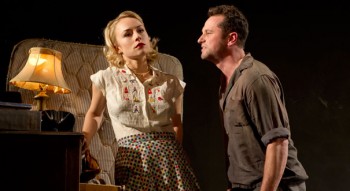 Heidi and I did go to see the play, Look Back in Anger. It was absolutely great. The best play I’d seen in the past couple of years. The director, Sam Gold, limited the stage. The actors have the length of the stage to move, but there’s a black wall cutting the width of the stage to about four feet. It really drives home the claustrophobic apartment the characters inhabit. The lead actors, Sarah Goldberg and Matthew Rhys are decidedly stars in the making. The show was just brilliant. I found the mostly negative reviews a bit puzzling. Michael Feingold, in the Village Voice, seems to explain the reasoning behind that mystery. He writes about the British scene coming upon this play back in 1956 and how it broke through their class system and marked the changes that they were facing in heir Country. The US had gone through something similar earlier marked by shows like Streetcar Named Desire. (“Stella!”)
Heidi and I did go to see the play, Look Back in Anger. It was absolutely great. The best play I’d seen in the past couple of years. The director, Sam Gold, limited the stage. The actors have the length of the stage to move, but there’s a black wall cutting the width of the stage to about four feet. It really drives home the claustrophobic apartment the characters inhabit. The lead actors, Sarah Goldberg and Matthew Rhys are decidedly stars in the making. The show was just brilliant. I found the mostly negative reviews a bit puzzling. Michael Feingold, in the Village Voice, seems to explain the reasoning behind that mystery. He writes about the British scene coming upon this play back in 1956 and how it broke through their class system and marked the changes that they were facing in heir Country. The US had gone through something similar earlier marked by shows like Streetcar Named Desire. (“Stella!”)
Just the same, I got what this version of the show was doing and felt that Sam Gold had pulled John Osborne‘s play into the 21st Century taking the Kitchen-sink drama and dragging it through Beckett’s Theater of the Absurd. Great stuff and very inspiring. Just a bunch of actors and not much more. But very moving.
- I love that the dimwitted Rick Santorum won the Republican caucuses/primary on Tuesday. (Boy is this guy a turkey; he’s still living in the 18th century.) The Republicans are just showing that they’re completely at odds with all of the candidates available to them. The clown show will continue until their convention this Summer, and, by then, we’ll all be exhausted with the incessant lies and vitriol these guys throw at each other.
Sorry, I’ll get back to writing about animation.
- The Oscar nominated shorts are being shown at the IFC Center – as of now. They make for three good programs. (Actually, I think the animated shorts program is the best of the three.) Here’s a review from the Village Voice.
Info on the screenings:
Documentary Shorts
Live Action shorts
Animated Shorts
- Bill Peckmann has been contributing artwork to other blogs. On Joakim Gunnarsson‘s great site Sekvenskonst there is a great piece featuring many self-caricatures of a lot of cartoon and comic strip artists. We used one of these self caricatures on our Thursday piece about Rowland B. Wilson. Everyone from Roy Doty to Chester Gould to Basil Wolverton to Mort Walker to Tom Morrison to Ernie Bushmiller is represented and plenty more.
- Here is a well written paragraph from AO Scott‘s NYTimes generally positive review of Chico and Rita, which opened yesterday at the Angelika Film Center. (Directors Fernando Trueba & Javier Mariscal will be doing Q&A’s following the 7:40 PM shows Sat & Sun, Feb 11-12. )
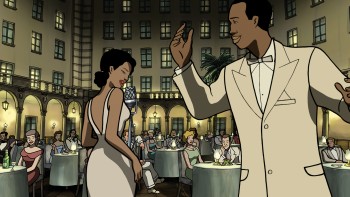 “Chico & Rita,†nominated for an Academy Award as the best animated feature, is a reminder not only of the aesthetic vitality of hand-drawn, two-dimensional animation, but also of the form’s ability to provide entertainment and enlightenment for adults. A costume drama or a documentary would not have been as charming or as surprising. It would be hard to get cameo appearances from Charlie Parker or Marlon Brando, and the dutiful literalism of historical filmmaking would have dampened the vitality and killed the magic.
“Chico & Rita,†nominated for an Academy Award as the best animated feature, is a reminder not only of the aesthetic vitality of hand-drawn, two-dimensional animation, but also of the form’s ability to provide entertainment and enlightenment for adults. A costume drama or a documentary would not have been as charming or as surprising. It would be hard to get cameo appearances from Charlie Parker or Marlon Brando, and the dutiful literalism of historical filmmaking would have dampened the vitality and killed the magic. and here’s a couple of lines from Lou Leminick‘s NYPost review:
- Complain all you want about the Oscars (I certainly do), but give the academy major props for bypassing a clunker like “Cars 2†and handing a Best Animated Feature Film nomination to something as wonderful as “Chico & Rita.â€
- “Chico and Rita’’ beguiles first and foremost as a bebop romance that evokes a bygone era as well as, or maybe even better than, “The Artist.â€
Finally, I wanted to write a couple of notes about the Annie Awards ceremony.
For years I’d read about the awards, without having attended, and have only been able to think about it in comparison to the ASIFA East awards, which are a small celebration of animation by the local members of the NY chapter of ASIFA. Ours is almost clublike in its ceremony. Very non-formal people dressed in street clothes, which means predominantly jeans and dress-down wear. The shaggy student awards. The idea that ASIFA Hollywood dressed up for their event made me immediately put it on a higher pedestal. I hadn’t attended one of the Hollywood ceremonies, and only by seeing the streamed version of the awards could I get an inkling of what it was.

Having Patton Oswald host the event was only a positive in my mind. He’s such a quick-minded comic who would do well at the podium. A real professional. However, hearing no feed back of audience laughs (there obviously was no audience mike for the program), made it seem like all his jokes were falling flat. There were also plenty of flubs on the stage as presenters were presented with the wrong envelopes, and winners learned of their wins a full category before their turns.
From the home audience it seemed like a train wreck had been occurring in front of our noses. I honestly couldn’t imagine how tedious this must have seemed to the live viewers. But then they had a bar and drinks and friends to laugh with in the nearby seats. Very different than watching a show on a computer at midnight. Rooting for something like Phineas and Ferb over something else like Prep and Landing 2 at midnight on a Saturday night, just doesn’t quite make it.
The awards went to deserving people, I’m sure. I recognized many of the names, and it was nice to finally put some of the faces to those names I’d only known from credit rolls. And I congratulate them for their well-deserved awards. However, to most of the world these are unknown people. There was a limited audience for this program. Me and a couple hundred others who’d sit out the slow slog.
I suspect that until I can see the Hollywood awards live, I’ll sit out future streaming telecasts. But then, I’ll probably change my mind at the last minute next year and watch it again.
Animation &Commentary &commercial animation &Independent Animation &repeated posts 06 Feb 2012 06:49 am
John Wilson – part 5
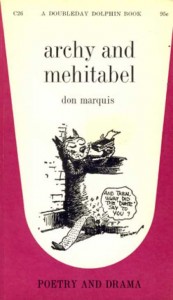 - Don Marquis‘ book, Archy and Mehitabel, garnered fame quickly and not least because of the extraordinary illustrations of George Herriman, the creator of Krazy Kat.
- Don Marquis‘ book, Archy and Mehitabel, garnered fame quickly and not least because of the extraordinary illustrations of George Herriman, the creator of Krazy Kat.
The first book was published in 1927 and others followed in 1933 and 1935. It wasn’t until the third book that Herriman took over the characters created by Marquis in his book of short stories, developed mostly, in poetry. An on-again off-again love affair, the story had two principal characters: a cat, Mehitabel, and Archy, cockroach. (You can read these poems on line here.)
In 1953, writer Joe Darion along with composer George Kleinsinger (the creator of Tubby the Tuba) wrote a musical theater piece. Tenor Jonathan Anderson played Archy and soprano Mignon Dunn was Mehitabel. At about the same time a recording of the showtunes was recorded with Carol Channing as Mehitabel and Eddie Bracken as Archy. The record was a success.
With the help of the young writer, Mel Brooks, they were able to get their show to Broadway in 1957, but it was now named Shinbone Alley. After 49 performances, the show closed, but the original cast album was recorded that same year. The songs stayed in the permanent repetoire of Carol Channing and Eartha Kitt.
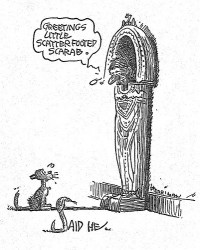 In 1971, John Wilson directed an animated feature starring the voices of Channing and Brackett and using the songs from the musical. The love affair between Archy and Mehitabel was penned by Archy, the cockroach; his poems tell their story.
In 1971, John Wilson directed an animated feature starring the voices of Channing and Brackett and using the songs from the musical. The love affair between Archy and Mehitabel was penned by Archy, the cockroach; his poems tell their story.
The film suffers from its music. The songs are simple and sound as if they’re written for children, but the lyrics pull from the poems which are definitely designed for adults. It gets a bit confusing, as a result, and is a bit picaresque; the poems are short and illustrating them in animation would take more adaptation than seen here.
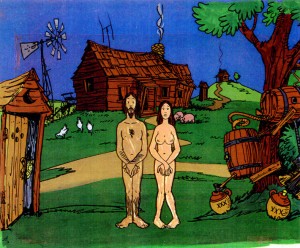 John Wilson had developed his studio, Fine Arts Films, on the back of the weekly, animated, music videos he did for The Sonny and Cher Show, an enormous hit in the early 70s.
John Wilson had developed his studio, Fine Arts Films, on the back of the weekly, animated, music videos he did for The Sonny and Cher Show, an enormous hit in the early 70s.
These music videos were loose designs animated quickly and lively around the songs Sonny & Cher would schedule each week. There would always be one or two of these pieces, and they were highlights in the weekly one-hour musical/variety program.
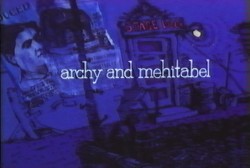 The graphics of Shinbone Alley aren’t too far from these Sonny & Cher videos. Loose design and animation with a design style not too far from the Fred Wolf’s made-for-ABC feature, The Point. This was the first feature made for television and featured the songs and story of Harry Nilsson, although Shinbone Alley featured a wilder color pallette.
The graphics of Shinbone Alley aren’t too far from these Sonny & Cher videos. Loose design and animation with a design style not too far from the Fred Wolf’s made-for-ABC feature, The Point. This was the first feature made for television and featured the songs and story of Harry Nilsson, although Shinbone Alley featured a wilder color pallette.
Jules Engel, Corny Cole and Sam Cornell all worked in design on the film. The long list of 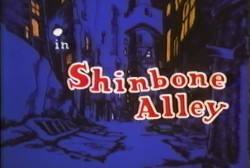 animators included Barrie Nelson, John Sparey, Spencer Peel, Eddie Rehberg and Jim Hiltz. Mark Kausler was an assistant on the show.
animators included Barrie Nelson, John Sparey, Spencer Peel, Eddie Rehberg and Jim Hiltz. Mark Kausler was an assistant on the show.
The film wasn’t an enormous success, but that was probably explained much by the limited distribution and the poor marketing of the film. I saw the film when it came out; I was living in Washington DC at the time (in the Navy). I was very disappointed. The animation is very limited and the style was a real let-down having known the George Herriman illustrations from the Don Marquis book. We’d already seen those limited animation Krazy Kat cartoons from King Features, so I knew the style could be done adequately – even on a budget. The style in this film just seemed a little too Hollywood cute, at the time, and it felt dated when it came out. I don’t feel too differently about it watching the VHS copy I own.
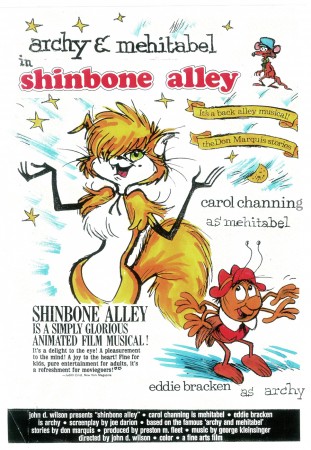
the film’s poster
Here are some frame grabs from the first 1/4 of the film:
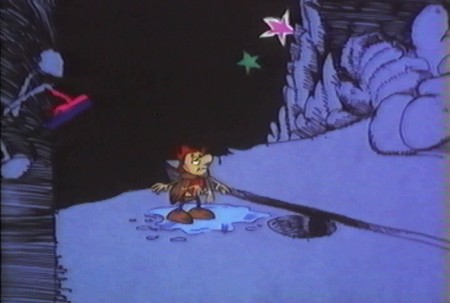
We’re introduced to Archy right off the bat as he
flies out of the river onto the dock. He realizes that he,
the poet, tried to kill himself and was sent back as a cockroach.
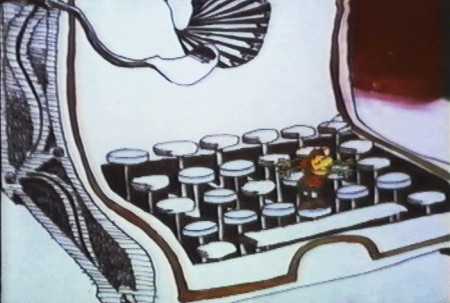
He soon finds a typewriter and goes straight back to work.
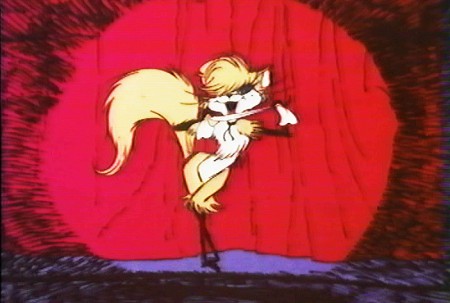
Mehitabel is a performer – with Carol Channing’s voice.
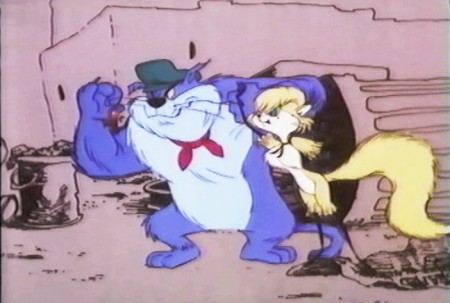
She has another boyfriend, voiced by Alan Reed,
who is also the voice of Fred Flintstone.
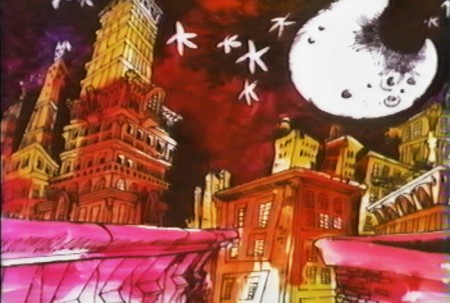
A song video takes us outside.
Part of this post was originally on this Blog in February 2010.
